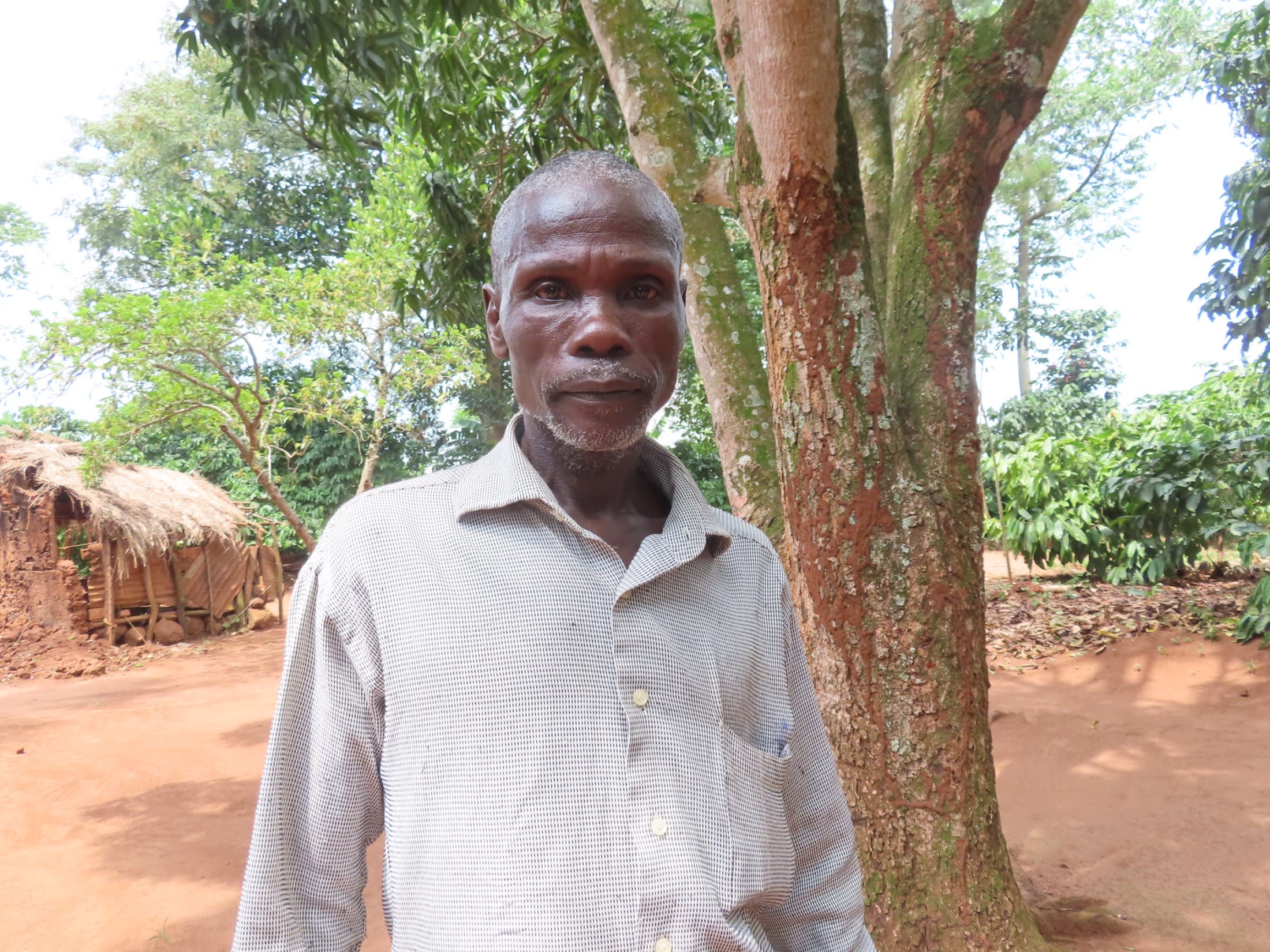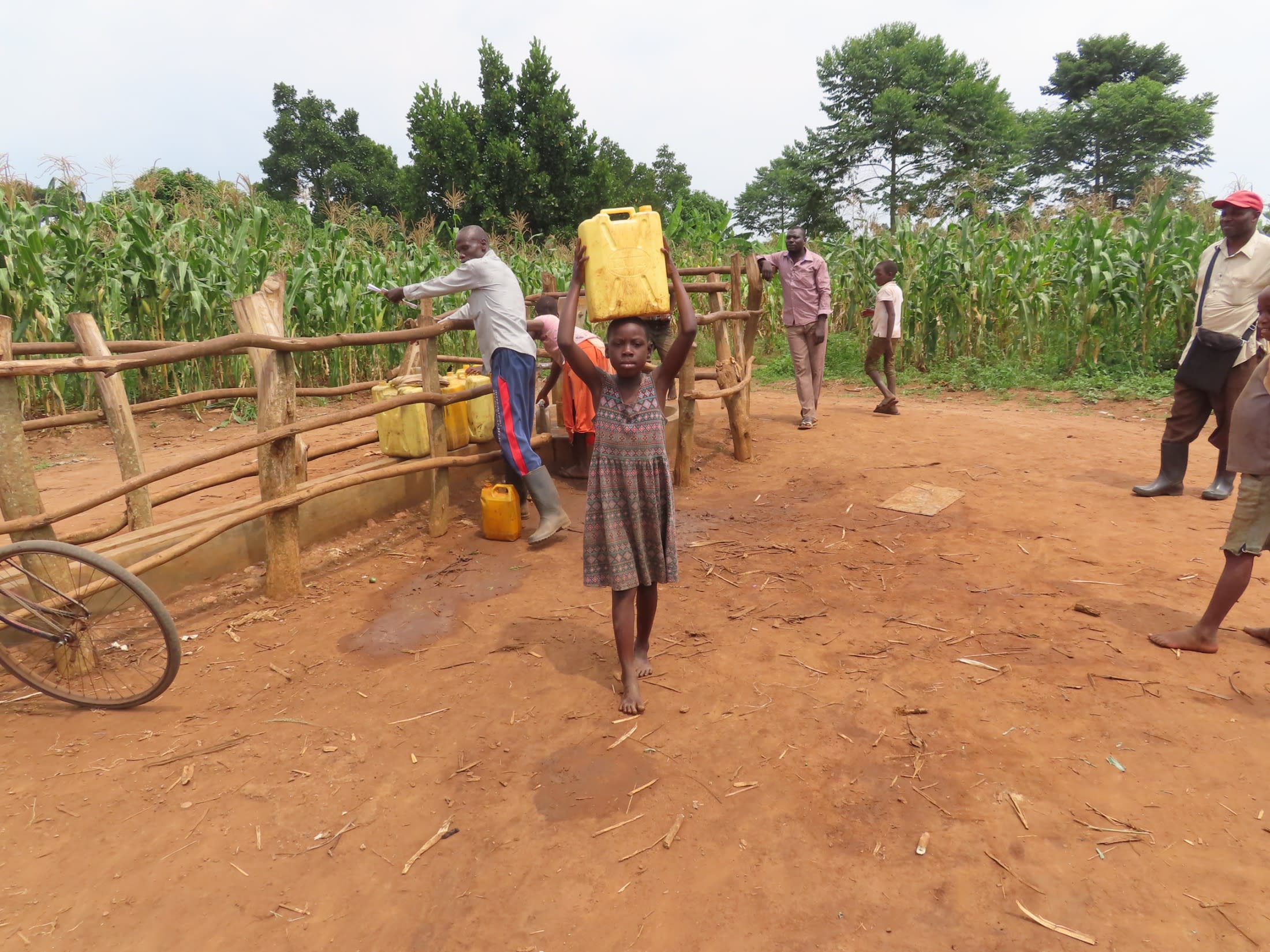In Kyakaki Kyawandera, people spend too much time walking and waiting in lines to collect water. There are two water points in the community, but well over a thousand people rely on them. With such high demand, frequent breakdowns and arguments break out between community members because of the long wait times.
The current water sources are very far away for this particular area of Kyakaki Kyawandera, where 300 people live. When community members walk to collect water and wait in line, it is often a two-hour trip, which is often repeated more than once a day. That is a lot of wasted time that could be used towards adults increasing livelihoods and students learning in school.
When the wells are not operating, or people do not have the time or energy to walk the long distance, they resort to open water sources scattered throughout the community. These are dangerous to drink from and lead to waterborne illnesses.

"In this catchment (area), we have only one borehole, and with the high population, there are always frequent breakdowns, which force us to share the existing open water sources with animals. During dry seasons, the open water sources dry, and this pushes us to walk extra miles to access water from the neighboring villages," said Bizibu Charles, a 56-year-old farmer, shown above.

Provia, 9, shown above carrying water from the faraway well, said, "I hate going to collect water, especially in the evenings where there is too much congestion. The elder boys and girls push us and ensure they collect water before us even when I arrived before them. This has led to several fights, causing violence and hatred within the community."
Having a well in this area will ease the burden on the community's other water points and give the residents access to clean, safe water quickly.
Here's what we're going to do about it:
New Borehole
This new borehole is an exciting opportunity for this community! We work with the community to determine the best possible sites for this well.
We conducted a hydrogeological survey and the results indicated the water table is an ideal candidate for a borehole well. Due to a borehole well's unique ability to tap into a safe, year-round water column, it will be poised to serve all of the water needs for this community, even through the dry months.
Community members will help collect the needed construction materials such as sand, rocks, and water for mixing cement. They will also provide housing and meals for the work team, in addition to providing local laborers. We will complement their materials by providing an expert team of artisans and drilling professionals, tools, hardware, and the hand-pump. Once finished, water from the well will then be used by community members for drinking, handwashing, cooking, cleaning, and much more.
Training
Training's main objectives are the use of latrines and observing proper hygiene practices since these goals are inherently connected to the provision of clean water. Open defecation, water storage in unclean containers and the absence of hand-washing are all possible contaminants of a household water supply. Each participating village must achieve Open Defecation Free status (defined by one latrine per household) prior to the pump installation for this borehole well.
This social program includes the assignment of one Community Development Officer (CDO) to each village. The CDO encourages each household to build an ideal homestead that includes: a latrine, a handwashing facility, a separate structure for animals, a rubbish pit and a drying rack for dishes.
We also implement the Community-Led Total Sanitation (CLTS) approach with each of our village partners. This aims to improve the sanitation and hygiene practices and behaviors of a village. During these sessions, village leaders naturally emerge and push the community to realize that the current practices of individual households – particularly the practice of open defecation – are not only unhealthy, but affect the entire village. CLTS facilitates a process in which community members realize the negative consequences of their current water, sanitation and hygiene behaviors and are inspired to take action. Group interactions are frequent motivators for individual households to build latrines, use them, and demand that other households do the same.
Improved Sanitation
The aim is that all households own an improved latrine. Many households do not use a latrine but use the bush. Due to open defecation, feces are spread all over the village. This leads to waterborne diseases and contamination of groundwater and surface water. Our aim is that the community is able to live a healthy life free of preventable diseases. We endeavor that at the end of our presence in the community, people will have both access to sustainable, clean water and access to sanitation. We have now organized families to form digging groups for latrine construction, and empowered them with tools to use.

 Borehole Well and Hand Pump
Borehole Well and Hand Pump
 Rehabilitation Project
Rehabilitation Project



























